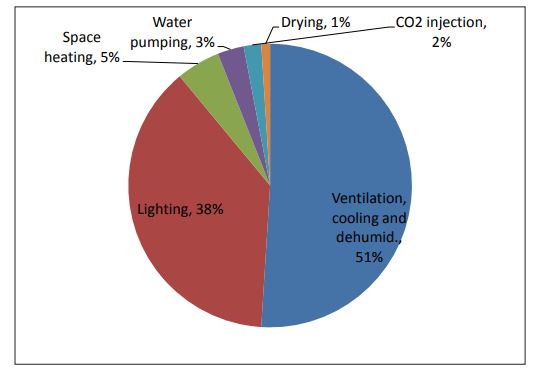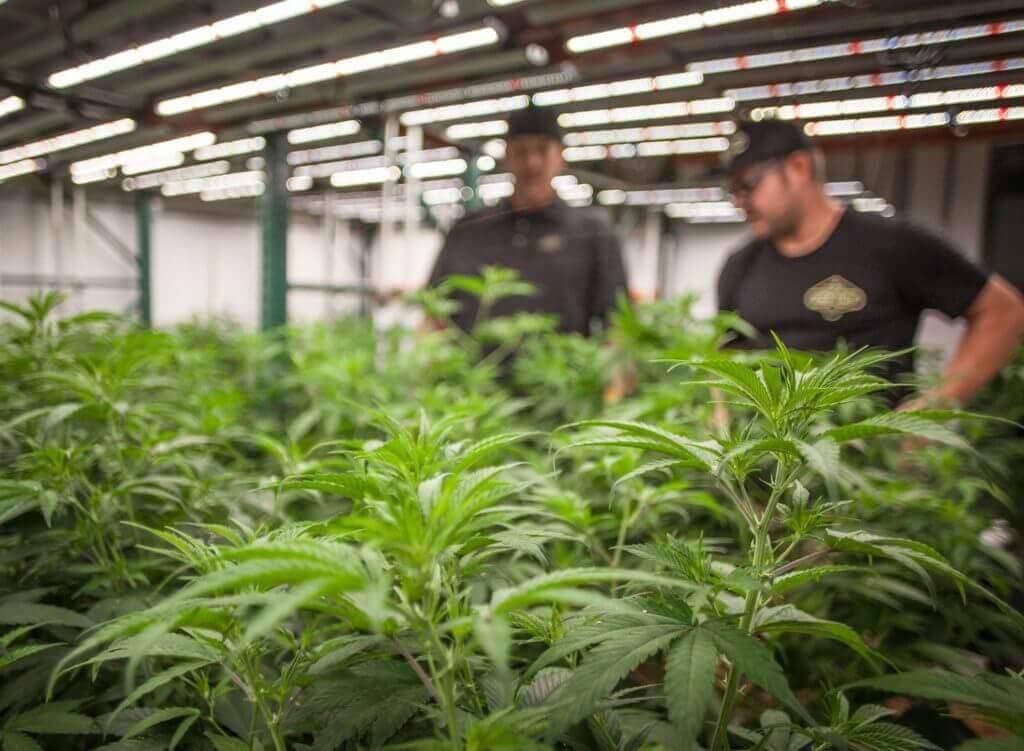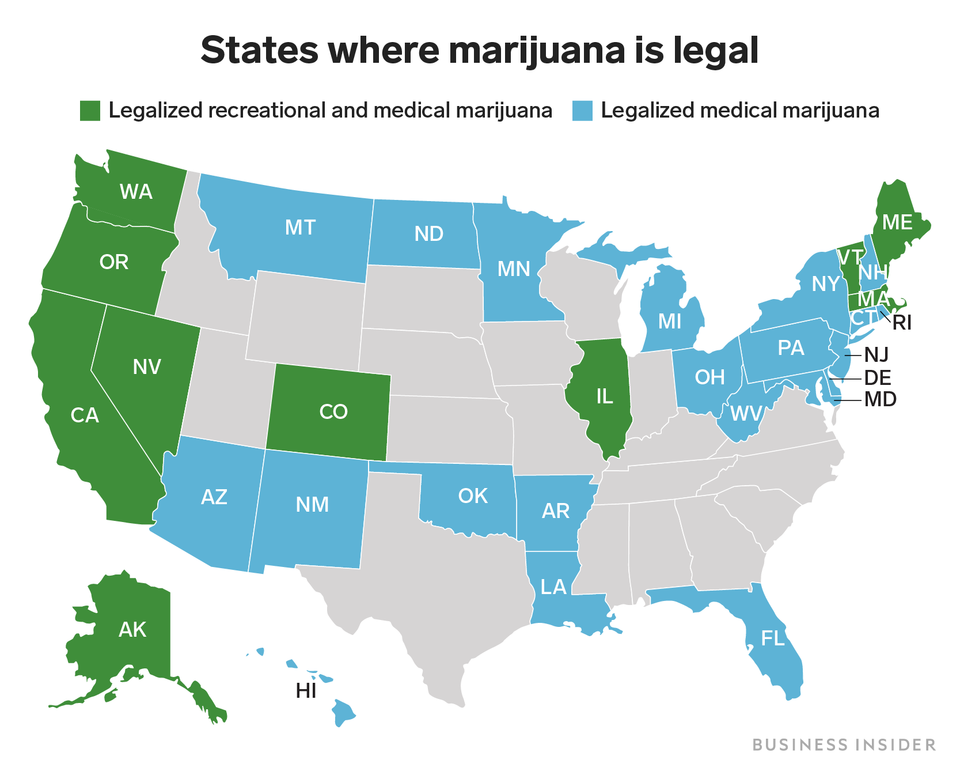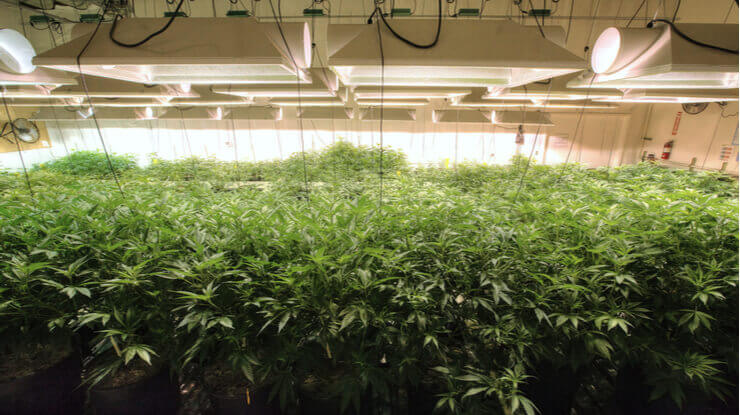Grow room electricity used for commercial cannabis production is now estimated at 1% of all electricity used in the USA. Recreational and/or medicinal pot is legal in 31 states and Washington DC.
Indoor grow rooms use tremendous amounts of power. But just how much power do they consume?
In this article we will cover:
- How Much Power Does a Cannabis Grow Room Consume?
- What’s the Cost of Electricity to Grow Cannabis?
- Grow Room Electricity Calculator
- Why is Growing Cannabis so Energy Intensive?
- Impact of Light and Humidity on Cannabis Production
- What States Have Legalized Marijuana?
- Can I Grow My Own Pot?
- What Impact do Marijuana Growers Have on the Electric Grid?
- Cannabis Energy Efficiency Incentives
How Much Power Does a Cannabis Grow Room Consume?
According to the Northwest Power and Conservation Council (NPCC), indoor commercial cannabis production (also known as a cannabis grow room) can consume 2,000 to 3,000 kilowatt hours (kWh) of energy per pound of product.
What’s the Cost of Electricity to Grow Cannabis?
Let’s do some quick math that shows how much you’ll spend on electricity to grow cannabis, also known as marijuana.
For our example, we’ll use Massachusetts. This is one of the states where medical marijuana is legal, and electricity is deregulated.
In Massachusetts, the average commercial/business price per kilowatt hour is 16.14 cents (EIA, April 2019).
Burning through 3,000 kWh will run you around $484 (3,000 * .1614).
According to industry resources, an ounce of marijuana in Massachusetts costs $340. That means a pound of marijuana would generate around $5,440 in retail revenue.
So $484 in electricity for 3,000 kWh, to grow one pound of marijuana, generating $5,440 in retail revenue. (And don’t forget, these grow rooms are typically wholesalers, not retailers.)
That’s the amount and cost of electricity to produce just one pound of marijuana.
So you can see that a commercial grow room electric bill will use a large amount of electricity. Let’s get into that below.
Grow Room Electricity Calculator
A commercial grow room will have different needs depending on the size and scale of the operation.
In this example, we’ll do the calculation for a small LED light with 4 foot X 4 foot vegetative grow coverage. Note that this would be multiplied many times over for a commercial cannabis growing operation.
How to calculate grow room electricity:
- Find your cost per kilowatt hour
Check your most recent electricity bill. Your looking for the average cost per kilowatt hour including energy, delivery and taxes.
For our example we’re going to stick with Massachusetts:
Price per kWh: 22.61 cents - Identify the wattage of your appliances.
For your grow room operation, you will have LED or HID grow lights, HVAC and exhaust fans. For this example, we’ll deal with lighting.
In our example, we will use a Viparspectra dimmable LED light found on Amazon.com with a 4’x4′ vegetative coverage. It’s rated at 1200W.
Wattage: 1200W
Kilowatts used (#watts/1000) = 1.2 KW
(Smaller LED grow lights are also available for home use.)
You can learn more about wattage in our article, What is a Kilowatt Hour and What Can it Power? The illustration below shows examples of the wattage labeling you will find on the back of any electronic device, if you don’t have the original packaging.
- Number of Hours Per Day Used in Vegetative Growth Phase.
The most common light-dark cycle used in commercial grow operations is 18 hours on, 6 hours off, to simulate daylight.
Hours = 18 hours daily - Number of Hours Per Day Used in Flowering Phase.
In the flowering stage, the light-dark cycle is 12 hours on, 12 hours off.
Hours = 12 hours daily - Calculate the Cost of Electricity During Vegetation Growth Phase
Assuming a 6 week vegetation phase, which will vary depending on the strain of cannabis you are growing:
22.61¢/kWh * 1.2KW * (18 hours/day * 7 days/week * 6 weeks)
Price per kilowatt hour * number of kilowatts * number of hours - Calculate the Cost of Electricity During Flowering Phase
Assuming a 10 week flowering phase, which will vary depending on the strain of cannabis you are growing:
22.61¢/kWh * 1.2KW * (6 hours/day * 7 days/week * 10 weeks) = $114
Price per kilowatt hour * number of kilowatts * number of hours - Calculate the Total Cost of Electricity Used
Add together the costs from your Vegetation Phase and Flowering Phase to get the total cost of electricity for your grow room for a single harvest.
- Repeat These Steps for all Electronic Devices
What Uses Electricity in a Commercial Grow Room?
The example we walk through above is for lighting.
A marijuana grow operation also needs ventilation, exhaust fans, cooling/heating, and watering systems.
The chart below shows usage of electricity in a cannabis grow room.

Why is Growing Cannabis so Energy-Intensive?
An outdoor cannabis farm is not energy intensive. However, major commercial grow operations for the medical marijuana industry and recreational marijuana industry are more typically indoor grow operations. This offers better production control.
Cannabis growing is energy intensive because light and air conditioning are used to create optimal growing conditions.
Managing light and cooling will shorten the crop’s growing cycle and increase yield.
Indoor lighting units in grow operations are 500x times more powerful than normal reading lights. Four-plant lighting units use as much power as twenty-nine refrigerators.
source: National Conference of State Legislators
Impact of Light and Humidity on Cannabis Production
Lighting plays a critical role in any indoor gardening, regardless of the crop. Photosynthesis is the process of growth for plants. This process requires sunlight for the plant to create it’s own food from air and water.
After lighting, air conditioning, ventilation and dehumidification are also costly, due to the strict temperature and humidity needs of the plants.

Humidity must be controlled for optimum growth. During vegetative growth stages, 70 percent humidity is standard practice. During the flowering stage, humidity should be kept at 50 percent.
What States Have Legalized Marijuana?
As of June 25, 2019, medical and/or recreational marijuana is legal in 33 states and the District of Columbia. And, 84% of Americans believe medical marijuana should be legalized in all states, according to LoudCloudHealth, a cannabis industry website.
Medical Marijuana: Arizona, New Mexico, Utah, Oklahoma, Arkansas, Louisiana, Florida, Montana, North Dakota, Minnesota, Michigan, Missouri Ohio, West Virginia, Pennsylvania, New York, Maryland, Delaware, New Jersey, Connecticut, Rhode Island, New Hampshire, Hawaii, Washington DC.
Recreational & Medical Marijuana: Washington, Oregon, Nevada, California, Colorado, Illinois, Massachusetts, Vermont, Maine, Alaska.
Below is a map of states where marijuana is legal. Or check out this interactive map that’s continually updated.

Can I Grow My Own Pot?
Even if marijuana is legal in your state, there are still restrictions. Typically, individuals are limited to a specific number of marijuana plants for personal use.
Leafly.com has published a state-by-state guide to home cannabis cultivation laws. Be sure to check local regulations.
What Impact do Marijuana Growers Have on the Electric Grid?
With the increasing number of states and now Canada legalizing marijuana, cannabis farming operations are a growing concern for electricity grid management. (Pardon the pun.)
Some experts estimate that electricity for marijuana production now uses 1% of all electricity consumed in the USA (December 2018).
Here’s an example to put it in perspective: compared with a typical office building, indoor marijuana growers are about 10 times as energy intensive on a square footage basis.
Source: Southwest Energy Efficiency Project (SWEEP).
In some markets where adoption was early, the impacts are even greater. Growers account for 4% of Denver’s electricity consumption.
Many utility companies are actively working with commercial growers to identify energy efficiency measures.
In Illinois and Massachusetts, legislatures are placing restrictions on the types of lighting that growers can install. Since marijuana production is illegal on a national level, it’s up to states to control energy usage for pot production.
Cannabis Energy Efficiency Incentives
To combat the huge strain on the electrical grid, many utilities have developed energy efficiency programs to work with cannabis grow operations.
These programs include rebate and incentive programs for HVAC and lighting upgrades.
Some of the utilities that offer energy efficiency incentives for cannabis growers include
- Pugent Sound Energy (Washington)
- Sacramento Municipal Utility District (California)
- Excel Energy (Colorado and Michigan)
- National Grid (Massachusetts).
If you are a licensed commercial grower, your local utility company must, by law, service your account. You are entitled to take part in any incentive programs your utility offers.
Additional Resources
Hey, we sell electricity, not pot. And it’s not even legal in Texas, where we are based. If you are looking for additional resources, here are some of the sites we used:
As an Amazon Associate, ElectricityPlans.com will earn compensation from qualifying purchases.

